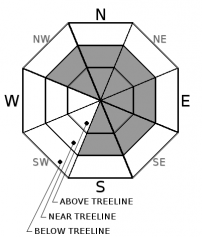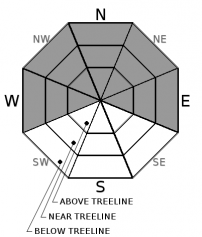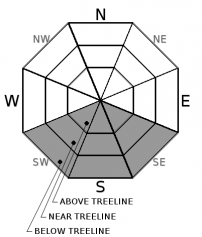| Wednesday | Wednesday Night | Thursday | |
|---|---|---|---|
| Weather: | Sunny skies. | Clear skies. | Sunny skies. |
| Temperatures: | 40 to 45 deg. F. | 19 to 25 deg. F. | 40 to 45 deg. F. |
| Mid Slope Winds: | W | Variable | Variable |
| Wind Speed: | Light winds | Light winds | Light winds |
| Expected snowfall: | 0 | 0 | 0 |
| Wednesday | Wednesday Night | Thursday | |
|---|---|---|---|
| Weather: | Sunny skies. | Clear skies. | Sunny skies. |
| Temperatures: | 38 to 44 deg. F. | 20 to 25 deg. F. | 38 to 44 deg. F. |
| Ridge Top Winds: | W | W | Variable |
| Wind Speed: | 20 to 30 mph with gusts to 60 mph, decreasing to 10 to 15 mph with gusts to 30 mph in the afternoon. | 10 to 15 mph with gusts to 30 mph in the evening, becoming light. | Light winds |
| Expected snowfall: | 0 | 0 | 0 |



























